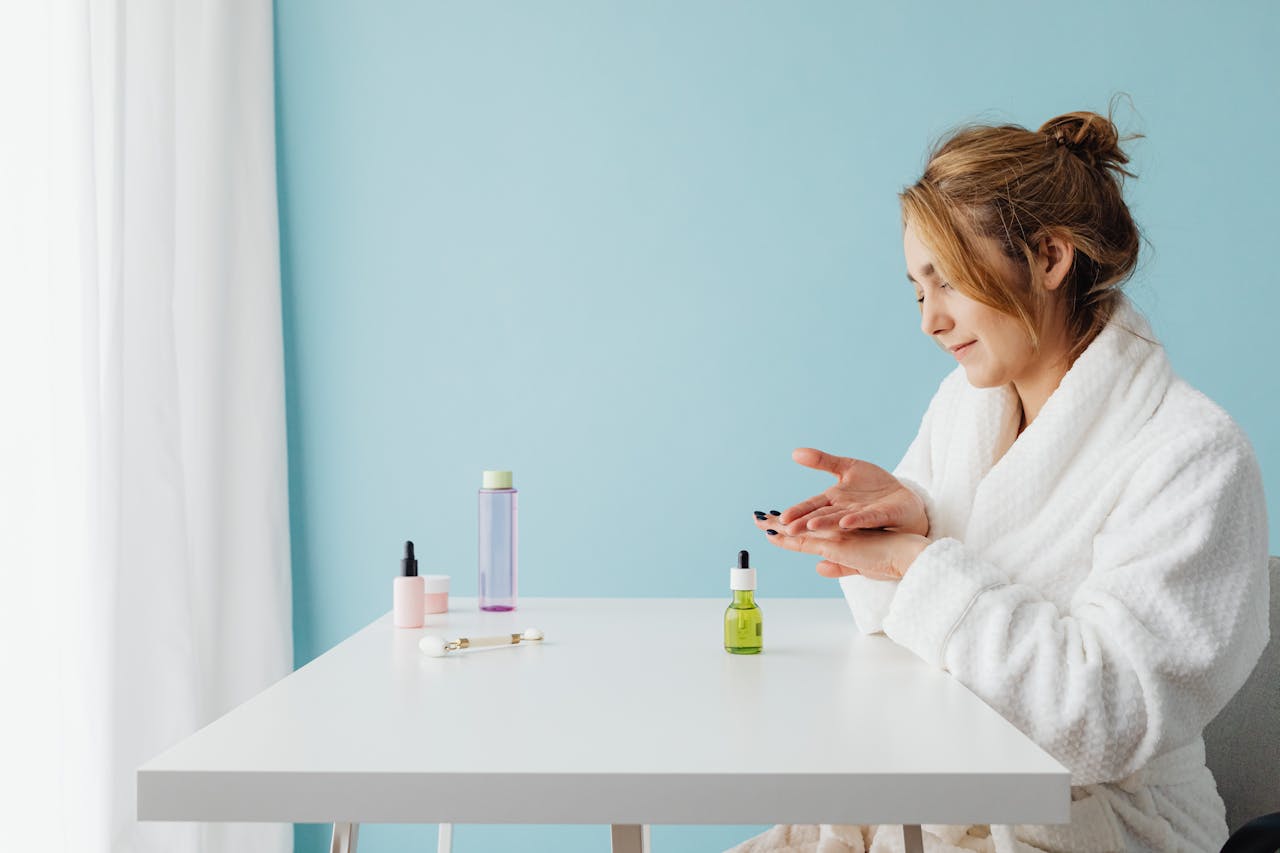
(Photo : Pexels / Karolina Grabowska)
Skincare layering is crucial for optimal product absorption and efficacy.
Skincare Layering
Dermatologists recommend applying products from thinnest to thickest consistency. This ensures lightweight formulas absorb first, followed by richer ones.
1. Cleanser
Always start with a gentle, non-abrasive cleanser to remove dirt and oil. Look for ingredients like ceramides, glycerin, or hyaluronic acid to hydrate and moisturize dry skin.
2. Toner
While not always necessary, toners can remove excess oil and prep your skin for other products. Choose hydrating toners with ingredients like hyaluronic acid for dry skin or salicylic acid for oily skin.
3. Spot Treatment
Apply spot treatments directly after cleansing or toning to target specific skin concerns like acne or dark spots. Look for ingredients like benzoyl peroxide or salicylic acid for acne, and hydroquinone or kojic acid for dark spots.
4. Serums
Serums are lightweight and water-based, making them ideal for targeting specific skin issues. Look for serums with ingredients like vitamin C for brightening, niacinamide for smoothing fine lines, and hyaluronic acid for hydration.
5. Retinol and Retinoid Treatments
Apply retinol treatments after serums to maximize their benefits. These vitamin A derivatives help stimulate cell turnover and improve skin texture, offering anti-aging effects and benefiting acne-prone skin.
6. Eye Cream
While not essential, eye creams can add moisture and hydration to the delicate skin around your eyes. Look for ingredients like peptides or antioxidants for day creams, and retinol or hyaluronic acid for night creams.
7. Moisturizer
Moisturizers should be used after lighter-weight serums or treatments. They help increase water in your skin and repair your skin barrier. Choose moisturizers based on your skin type -- hydrating for dry skin and oil-free for oily or acne-prone skin.
8. Face Oils
Face oils should be applied after moisturizer to provide additional moisture and hydration. Look for oils high in fatty acids like argan or coconut oil for nourishment, or lighter oils like jojoba oil to regulate oil production.
9. Sunscreen
Always apply sunscreen as the last step in your daytime skincare routine to protect your skin from UV rays. Look for broad-spectrum coverage with SPF 30 or higher.
Following these steps and choosing products based on your skin type can help you achieve healthy, glowing skin. Remember, consistency is key, and consult with a dermatologist if you have specific skin concerns.